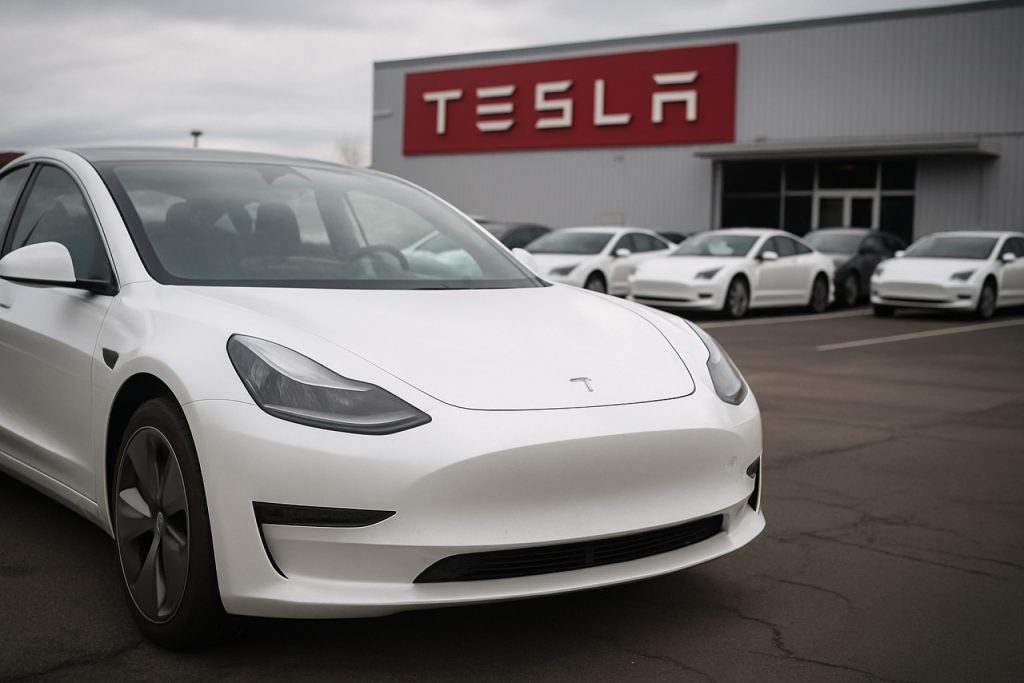
Tesla’s 2025 Delivery Numbers Take a Hit as Wall Street Sounds the Alarm
Tesla faces uncertain times as analysts predict lower electric vehicle deliveries in 2025, citing demand drops and changing incentives.
- 1.63 million: Oppenheimer’s projected Tesla deliveries for 2025
- 2nd consecutive decline: If forecasts hold, 2025 marks Tesla’s second year of falling deliveries
- US federal incentives: Potential cuts threaten EV market momentum
- China & Europe: Weak demand in two vital regions drags down global expectations
Tesla, the trailblazing electric vehicle (EV) powerhouse run by Elon Musk, is hitting a speed bump. Wall Street voices are sounding the alarm, lowering their expectations for Tesla’s 2025 deliveries. Analysts at Oppenheimer have slashed their forecasts, pointing to slumping demand and looming legislative hurdles that could squeeze US federal EV incentives tighter than ever.
What’s Driving Tesla’s Delivery Dip?
Tesla’s legendary growth streak may be stalling. Oppenheimer, one of Wall Street’s trusted names, now forecasts Tesla to deliver just 1.63 million vehicles in 2025. That number sits well below the industry consensus of 1.7 million, reflecting mounting doubts about Tesla’s ability to ignite consumer excitement as competition heats up and incentives cool down.
Demand Woes: China and Europe Falter
Tesla’s global footprint has taken a hit, with both China and Europe—key markets—reporting weakened sales data. The Chinese EV market, notorious for fierce rivals and price wars, is squeezing margins and crowding out foreign players. Europe, meanwhile, continues to grapple with economic headwinds and changing regulations, hampering consumer confidence.
In these two regions, analysts see little sign of a rebound. This trend directly impacts Tesla’s worldwide figures and clouds its once-impeccable growth story.
How Are Changing US Incentives Impacting Tesla?
Legislative shifts threaten Tesla’s bottom line in the US. The possibility of reduced federal tax credits for EV buyers is putting pressure on sales projections across the sector. Reduced incentives mean higher effective prices for consumers, dampening the EV adoption pace.
Oppenheimer’s pessimism suggests Wall Street is bracing for the US government to tighten its purse strings—at least temporarily—complicating Tesla’s ambitious growth targets.
Q&A: Is This a Temporary Slump or a New Normal?
Q: Can Tesla bounce back if global demand picks up?
A: Experts say that renewed demand in China and Europe would be pivotal. However, fierce competition and regulatory headwinds stand in the way.
Q: What could reverse this course?
A: Introduction of new incentives, breakout innovation (such as affordable mass-market EVs), or unexpected surges in consumer appetite might tip the scales.
How to Navigate Tesla’s Shifting Fortunes as an Investor
Stay vigilant. Track quarterly delivery reports and policy changes. Diversify by looking into other EV manufacturers and renewable energy stocks. Regularly check authoritative sources like CNBC, Bloomberg, and Reuters for the latest industry and policy updates.
Bottom Line: Tesla’s future remains electrifying, but investors and EV fans should keep a watchful eye on global demand and incentive shifts in 2025.
Next Steps Checklist:
- Monitor Tesla’s quarterly deliveries closely
- Keep up with changing federal and global EV incentives
- Follow key markets, especially China and Europe, for demand trends
- Explore alternative EV investments for a balanced portfolio
Stay tuned for more breaking updates as Tesla, and the EV world, races into a high-stakes 2025!



